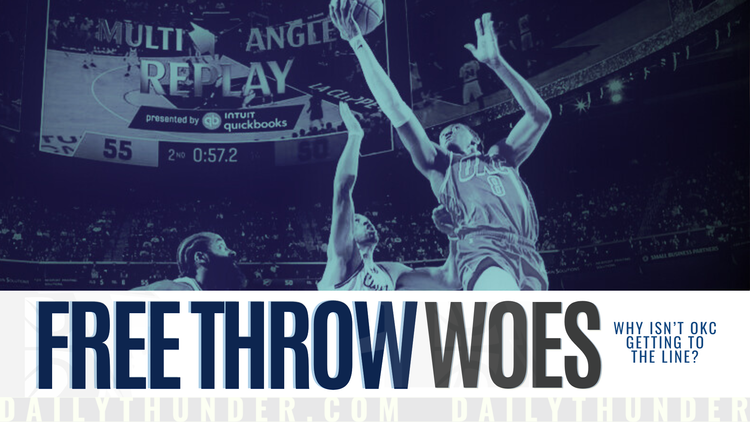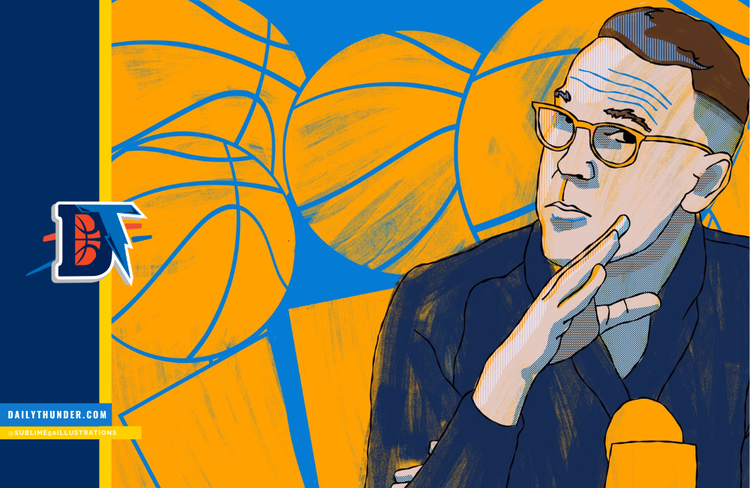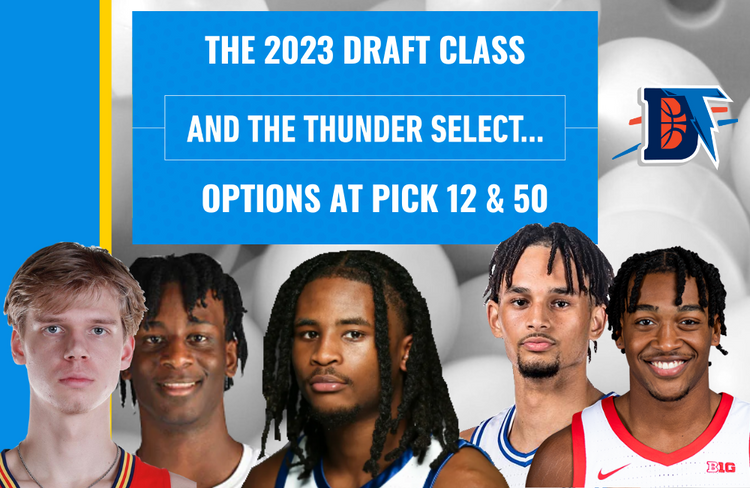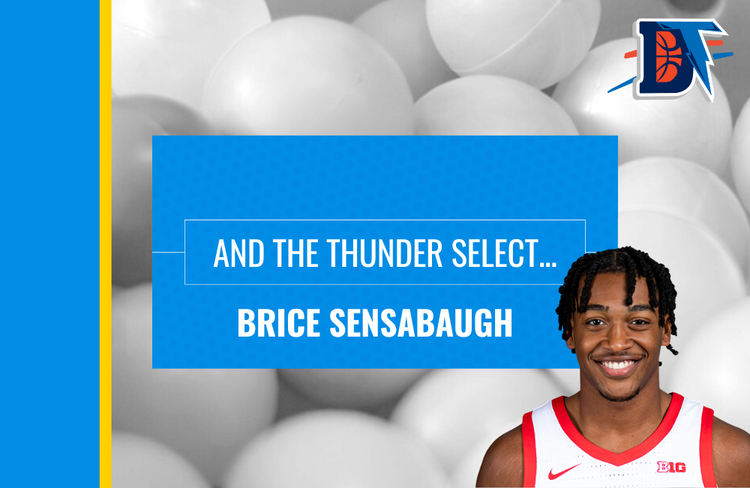And the Thunder Select: Bennedict Mathurin
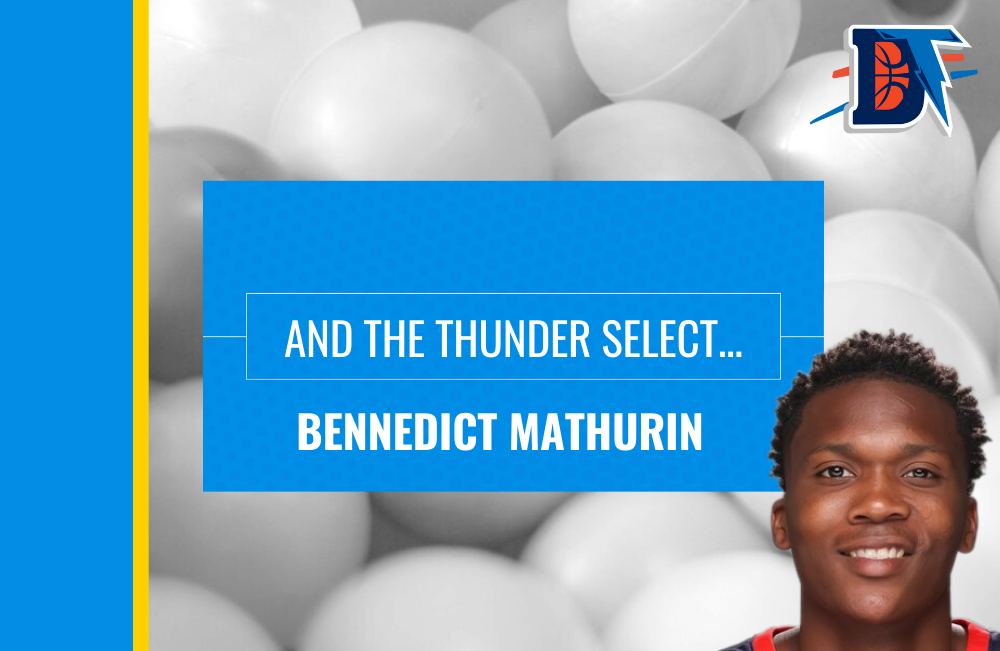
- Born: June 19, 2002
- Draft Age: 20.0
- High School: NBA Academy Latin America
- RSCI: 91
- College: Arizona
- Measurements: 6’6, 205 pounds, 6’9 wingspan
- Consensus Ranking: 8
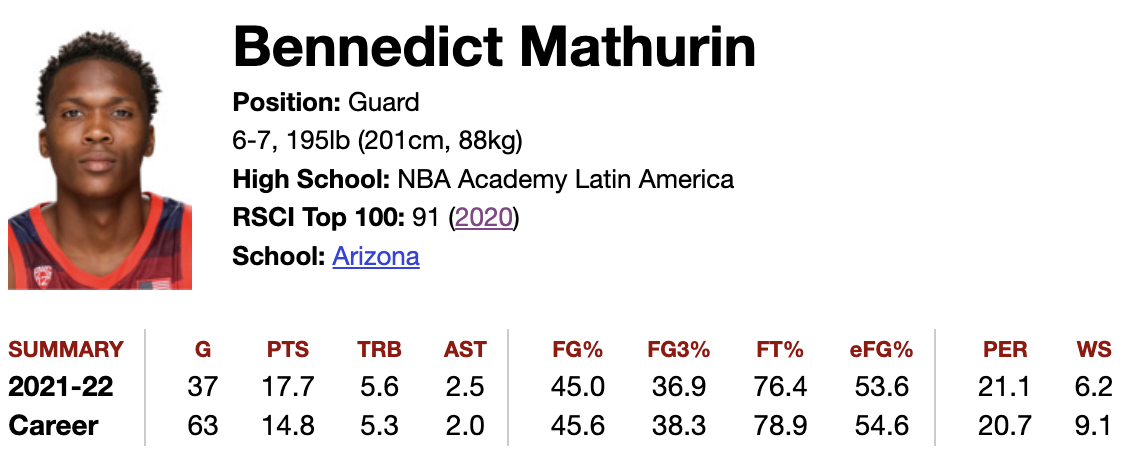
Shades of: J.R. Smith, Will Barton, Malik Beasley, Lonnie Walker
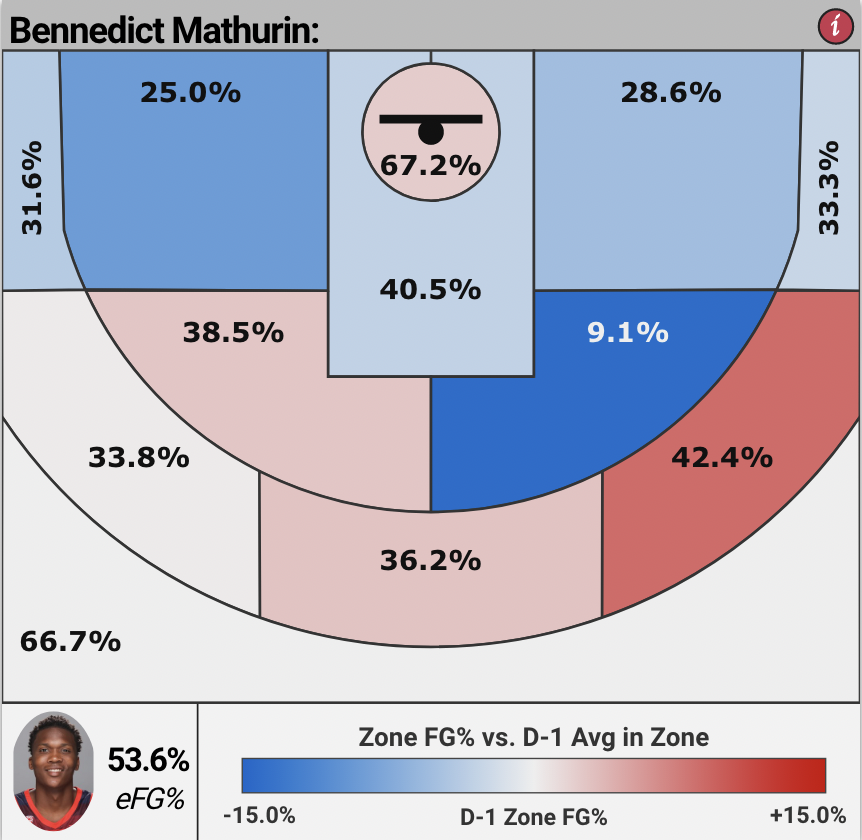
One of my favorite freshmen to watch in college basketball in 2020-21, Ben Mathurin decided to go back to Arizona after that stellar first season in order to boost his draft stock. He led Canada to a bronze medal in the 2021 FIBA U19s and parlayed that into being a near-lock for the 2022 NBA Draft Lottery. Arizona was one of the better teams in the nation this past year; Mathurin had an increase in usage as he nearly doubled his shot attempts as a sophomore, becoming a known commodity in the eyes of college basketball fans everywhere and eventually winning the PAC12 Player of the Year award.
Mathurin is projected to be drafted in the middle ground from the Thunder’s two lottery draft selections, the 8th ranked player per RookieScale’s consensus board in between Oklahoma City’s picks (2nd and 12th). He could slide or OKC could orchestrate a small trade up to secure Mathurin. If that happens, he would fit perfectly into OKC’s current structure as a team.
I’m a big fan of Mathurin’s game and would be very happy if the Thunder walked away with him on draft night at 12 overall. The guard’s off-ball movement, shooting versatility, and elite cutting skills would complement the two primary creators on the team (Shai Gilgeous-Alexander and Josh Giddey), and it never hurts to add another Canadian to OKC’s northern-friendly roster.
A Threat Off the Ball
One thing that really stands out about Mathurin on offense is his ability to move without the basketball. The Thunder’s two lead ball handlers would fit seamlessly with Mathurin, running him off of a variety of off-ball actions such as pindowns, floppy sets, and elevator screens. OKC severely lacks off-ball shooting and (especially) movement, so Mathurin would fit the team like a glove. He ranked in the 69th percentile off screens and was in the 77th percentile of guarded catch-and-shoot threes per Synergy, racking up a variety of three-point attempts during the year. His career mark of 38.3% from deep is promising, and he has the history and free throw percentage indicators to back it up.
Mathurin ranked in the 86th percentile on cuts this past season, per Synergy. He has tremendous instincts when darting to the basket, whether via a baseline or a 45 cut, and showed great chemistry with teammate Dalen Terry on plays like these. It’s easy to imagine Giddey hitting Mathurin throughout the season, becoming a dynamic duo in both the halfcourt and the open floor.
The Thunder haven’t had any threat of an off-ball movement shooter since Paul George, and Mathurin could provide a level of gravity valuable to high-level offenses in the NBA. He should not need the ball in his hands constantly to be an effective and efficient offensive player at the next level; on the other hand, teams a little higher than #12 who don’t have two ball handlers like the Thunder might force him into an on-ball creator role, which could get ugly. I’d expect his shot profile on the Thunder to be much more stable, taking those C&S threes, shots off movement and off screens, and finishing as a cutter in transition and the half court. I would expect a fairly efficient offensive season for him as a rookie in such a healthy role, as he could continue to iron out some kinks in his game while thriving primarily as an off-ball threat.
Versatility: Scoring and Shooting
At Arizona, Mathurin was forced into an on-ball role as a creator on the perimeter, similar to James Bouknight at UConn last year. Despite him playing this role admirably in college, I don’t foresee Mathurin being much of an on-ball creator in the NBA. His fantastic blend of movement shooting and slashing would be a much better way to maximize his talents on the offensive end of the floor. As for his on-ball traits, he isn’t the quickest at making decisions with the ball in his hands consistently and his handle is mediocre at best, as it’s fairly loose and he struggles to consistently create space with it (he ranked in the 9th percentile in isolation this past year, albeit on a small sample). But the good thing is that you don’t need to draft a creator like this at 12 overall with a team that already has two capable ones. Mathurin has shot well from distance in his two seasons at Arizona, finishing up his career at 38.3 percent on 316 attempts in two seasons, to go along with 78.9 percent from the line. This is in addition to an albeit small sample size at the 2021 FIBA U19s where he shot 34.5 percent from deep and 80.3 percent from the line.
There is no real reason to doubt Mathurin as a shooter at the next level. His open C&S numbers were, strangely, quite poor this past season (17th percentile) but I believe that’s simply statistical noise. The overall percentages are stellar, and he showcased a variety of shots in his arsenal to make him more than a stationary spot-up guy from deep. His shot form is beautiful and he gets it off quickly with a high release point, shooting over the top of his man. When defenders come hard to contest his shot, Mathurin has shown the ability to attack closeouts effectively when going in a straight line and finishing at the rim or drawing a foul (38.2% free throw rate for his career). From 25+ feet out this past season, Mathurin shot 39.6% (38/96) from three, 6.9 percentage points above the college average per CBB Analytics. This jump shot is definitely real; Mathurin would be a great floor spacer for a team like the Thunder that lacks one.
Mathurin was an okay finisher this past season, shooting 63.8% at the rim on 174 attempts, with 57.7% percent of his attempts being assisted, per Bart Torvik. Mathurin’s vertical athleticism is elite, as he can effortlessly elevate over the top of defenses to finish in traffic, or run and dunk in transition at a level no one on OKC’s roster presently can. His touch, on the other hand, is very meh. The rim numbers were solid yet unspectacular, and he didn’t fare much better on other two point shots, hitting only 27.9% of those attempts. Creating his own shot, especially in the midrange, is an issue you see over and over on his tape, but again that is something he would rarely have to do in Oklahoma City.
Defensive Concerns
On defense, Mathurin left a lot to be desired this past season. A lot of these higher usage, young prospects struggle with consistent effort on that end of the floor. Mathuring has the theoretical tools to be a good defender but too often didn’t give good effort in practice. He still managed to showcase plenty of flashes on that end of the floor, using his athleticism and length to sky up for weakside or transition blocks. And he’s fairly capable of chasing his man off-ball and fighting through screens when he is locked in. But when he isn’t, he is rather lazy off the ball, missing rotations and putting in little effort to fight through screens.
Mathurin’s 1.6% steal rate and 0.8% block rate are well below what you want to see from a prospect, especially ones with his athleticism. He isn’t anything close to being a “horrible” defender, but he was neutral at best throughout the season. If the shooting and slashing are as good as they looked in college, then you should be able to live with some defensive mistakes here and there when picking a player outside of the top 10.
Playmaking
Like I said earlier, Mathurin was largely forced into an on-ball creator role for Arizona, finishing second on his team in usage rate and first in minutes played by a long shot. The results were not always good, as he missed reads pretty frequently and had occasional lapses with tunnel vision. But Mathurin’s passing isn’t all bad. For a player of his archetype (hyper-athletic three point shooters like J.R. Smith and Malik Beasley), his passing is relatively solid. His 13.4% assist rate doesn’t stand out, but it’s a nice statistical indicator of being an okay decision-maker when combined with his low turnover rate. A game I clipped frequently in the compilation below was against USC, in which I thought he was at his best all season from a playmaking standpoint:
He was in the 59th percentile as a PnR ball handler per Synergy, and while that won’t consitute his game at the next level, perhaps he can run the occasional secondary action when a play stalls out. Mathurin is still fairly young for a sophomore and he has been getting valuable reps as a creator that could help him in the long run. His reads may be simplified if he is such a threat from three that he can successfully attack closeouts and create advantages immediately, diming up the open shooter or acting as another one of the connective passers on the current Thunder team.
Lock it In?
While I might not be a big fan of trading up to select Mathurin, such a move wouldn’t disgust me given the fact that he is about as perfect an on-court fit for Oklahoma City as there can be. The Thunder have an open spot on the wing waiting for him, and his best skills are a match made in heaven for a team looking for an off-ball player with movement shooting capabilities and elite athleticism in transition. His downsides are things that might not come to light on this team: his passing presumably wouldn’t be utilized much, and hopefully Mark Daigneault would get him to buy into the defensive end of the floor more with a lower usage role to make him put his length better to better use.
Mathurin currently sits in no-mans-land for the Thunder as a reach at #2 and a long shot to fall all the way to #12. I doubt GM Sam Presti will trade future assets to move up in this draft when all signs point to him being enamored with the 2023 draft, but we won’t know for sure until it happens. It’s still too early to know where Mathurin’s actual draft range is, but OKC’s second first rounder seems like the absolute floor. If he’s available and Oklahoma City thinks he is worthy of that pick, then I’d expect Mathurin to complement OKC’s current crop of players really well.


